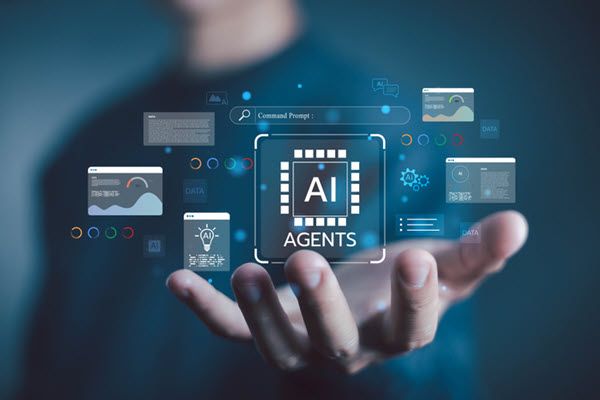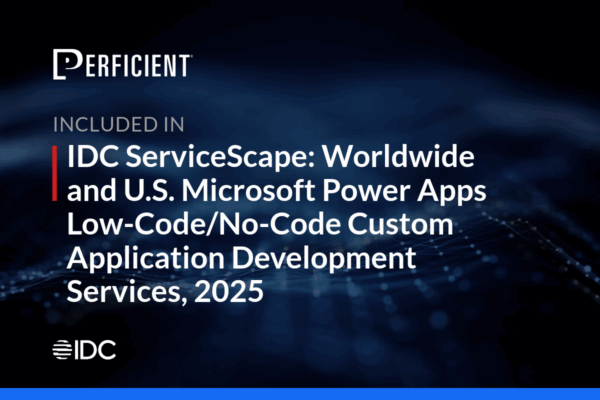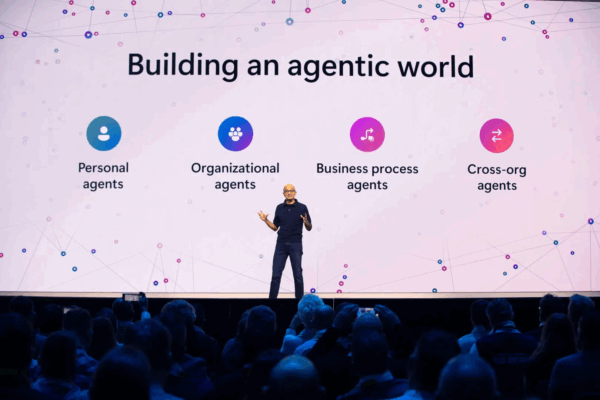Microsoft Work IQ is a new AI-driven intelligence layer in Microsoft 365 that understands how your organization actually works – far beyond the org chart – and uses that knowledge to make Copilot and AI agents context-aware by default. Announced at Ignite 2025, Work IQ gives Copilot “brains,” turning raw workplace data into actionable understanding. In practical terms, it finds patterns and context in your enterprise data, so AI assistants deliver answers and actions as if they truly know your business. This is a game-changer for IT leaders looking to harness AI: it means your AI won’t just retrieve information, it will understand it in context.
What is Work IQ?
At its core, Work IQ is the intelligence layer that enables Microsoft 365 Copilot and agents to know you, your job, and your company inside and out. It continuously analyzes the rich signals in your digital workspace – emails, files, chats, meetings – and learns from how work gets done in your organization. Microsoft describes Work IQ in three parts:
- Data: It connects to your work data in Microsoft 365 (SharePoint documents, Outlook emails, Teams meetings and chats, etc.), not as isolated files, but as a connected web of knowledge. Work IQ semantically indexes this content (understanding topics, intents, and projects) and captures business signals like relationships and timelines from it. In short, it codifies “how work gets done” from the daily flow of information.
- Memory: Work IQ builds a persistent memory of preferences and patterns – your personal work habits, styles, and the network of colleagues you interact with most. This is sometimes called your “work chart,” as opposed to the formal org chart. For example, it learns your writing tone, recurrent tasks, and who your go-to collaborators are, regardless of who reports to whom. This lets it carry context across sessions and tailor responses to your way of working.
- Inference: Finally, Work IQ uses inference to connect the dots between data and memory, turning raw information into insights and proactive assistance. It identifies patterns and relationships that might not be obvious – for instance, linking a chat mention of “Project Phoenix” to the related OneDrive folder and team members, or suggesting the next best action based on past similar projects. Work IQ essentially predicts needs and draws insights, going well beyond what any single API or connector can do in isolation.
Put simply, Work IQ maps the real flow of work in your company. It doesn’t just know the theoretical structure in an HR system – it knows who actually collaborates, what documents really matter for each project, how information moves across teams, and what context is relevant to the task at hand. It builds a living model of your organization’s workflows.
These are the kinds of insights Work IQ continuously curates to paint a holistic picture of your operational reality. That intelligence is built into Microsoft 365 Copilot today – it’s the same brain that makes Copilot’s answers feel enterprise-aware. Now, importantly, your own custom agents can tap into Work IQ as well. This means when you build an AI bot or automation for your organization, it can leverage that shared “work brain” to behave more like a smart teammate instead of a naive script.
Work IQ vs. Microsoft Graph: Data vs. Understanding
A common question is: How is Work IQ different from Microsoft Graph? After all, Microsoft Graph has long provided API access to mail, files, Teams, users, and more. The difference lies in raw data versus interpreted intelligence:
- Microsoft Graph is essentially a rich data access layer – a unified API to query information from Microsoft 365 (emails, calendar events, documents, chat messages, directory info, etc.). You ask for data, and Graph returns exactly what you requested, but it’s up to you to make sense of it Graph gives you the raw information (for example, a list of files or the text of an email) and as a developer you must build the logic around it.
- Work IQ is an intelligence layer built on top of that data. It leverages the data that Graph exposes, but adds a deep understanding of relationships, relevance, and context in that data. Instead of you writing code to figure out “who is working on what” or “which documents are important to this project,” Work IQ deduces that automatically by analyzing patterns. Work IQ gives you understanding – the meaning behind the data, not just the data itself.
In summary, Microsoft Graph is indispensable for accessing raw data, but Work IQ is what makes that data immediately useful for AI. The Graph pulls facts while Work IQ finds patterns and insights in those facts. This distinction is key: Work IQ is what elevates an AI assistant from a basic tool into a knowledgeable collaborator.
Why Work IQ Matters
Work IQ represents a strategic shift in how we build and deploy AI in the enterprise. Here are the key reasons it’s a big deal:
- AI with your organization’s DNA: Because Work IQ continuously learns from your company’s data and interactions, it makes AI responses highly specific to your context. Copilot answers won’t be one-size-fits-all; they’ll reference your internal projects, priorities, and terminology appropriately. For example, ask Copilot for “update on Project Phoenix” and instead of a generic answer, it will leverage Work IQ to know who’s driving that project, recent updates from Teams, and relevant files to summarize – all more relevant, actionable insights and spend less time sifting through information.
- Agents that act like teammates, not just tools: When your custom agents have Work IQ behind them, they gain a kind of common sense about the organization. They can anticipate needs and follow context in a human-like way. The goal is to have agents stop behaving like tools and start acting like teammates. For instance, an internal IT helpdesk bot with Work IQ could detect that a flurry of Teams messages and an email thread are all about the same incident and proactively alert the relevant engineer – a level of situational awareness that would feel almost proactive like a colleague, not a scripted Q&A bot.
- Faster, easier development of AI solutions: From an IT leader or developer perspective, Work IQ removes a huge amount of grunt work. You no longer need to manually wire together data from multiple sources and painstakingly program the context for your bots. Microsoft has effectively packaged the context layer for you. This leads to Faster development, Less complicated prompts and Less stitching of disparate APIs.
- More out-of-the-box intelligence for any agent you build. In practice, that can cut down development cycles and let your team focus on higher-level logic instead of data plumbing. For example, a developer using Copilot Studio can drag in the Work IQ connection and immediately have their agent “know” the user’s recent meetings or team documents, without writing custom code to fetch and summarize those.
- Built-in security and compliance: Work IQ is enterprise-ready by design. It respects all the existing permissions, sensitivity labels, and compliance rules on your data. Only information the user (or agent) is allowed to access will be surfaced, and it’s subject to audit and monitoring like the rest of Microsoft 365. For IT, this means you can trust Work IQ to handle corporate data responsibly. It’s not a rogue AI scraping everything – it’s operating within the governance framework you already manage. This distinction is key when enabling AI broadly in a company: Work IQ gives you intelligence and maintains the controls (something that pure large language models on external data don’t guarantee).
Real-World Applications and Examples
To make this more concrete, let’s look at how Work IQ can be applied in real scenarios that IT leaders care about:
- Project Specific Copilot: Imagine your PMO builds a Project Copilot agent in Copilot Studio. The goal is to onboard new project team members quickly. With Work IQ, this agent can instantly gather all relevant knowledge for a project. It might say, “Hello, I’ve compiled the key documents for Project Phoenix and identified that Alice and Bob are the top collaborators on this initiative. Would you like a summary of recent progress updates from Teams?” This is possible because Work IQ already knows which documents are central to Project Phoenix and who has been driving the conversations. The new team member doesn’t have to hunt for information – the agent, powered by Work IQ, serves it up in context. This accelerates ramp-up and ensures consistency in what information people see.
- Intelligent Helpdesk Bot: In your IT department, you could enhance a helpdesk chatbot (perhaps built with Power Copilot Studio) using Work IQ’s API. For example, an employee asks the bot a question about a system outage. A Work IQ-enabled bot could recognize, “This issue was discussed in an email thread yesterday and a Teams chat involves the network team”. It can then pull the pertinent info or even loop in the right expert automatically. Essentially, the bot understands the who and where of past incident knowledge. During Ignite, Microsoft showcased a Sales Development Agent that does something similar for sales – it pulls in context from CRM and internal comms to qualify a lead and suggest next steps. Your helpdesk bot can analogously use context to route and resolve IT tickets faster, by knowing what’s happened already across channels.
- Enterprise App with Contextual AI: Microsoft is also weaving Work IQ into its own tools for creators. In fact, the new Copilot App Builder in Power Platform (announced at Ignite) uses Work IQ to inject organizational context into the apps people build. For example, if a business user creates a budget approval app with App Builder, Work IQ could enable the app’s AI assistant to automatically show related budget files or identify the manager who usually approves similar requests, without extra configuration. This means citizen developers can create smarter apps that “know” the workplace. As an IT lead, you can encourage adoption of such tools, confident that the intelligence layer (Work IQ) will make these solutions far more useful and integrated into daily work.
Each of these scenarios highlights a pattern: Work IQ provides situational awareness that was previously missing in our software. It brings the same kind of contextual understanding that a long-tenured employee might have (“Oh, I know exactly who to ask about this issue, and I recall a similar project from last year…”) directly into our apps and agents. That dramatically improves both the user experience and the effectiveness of AI automation.
Conclusion
Microsoft Work IQ is a cornerstone of the “frontier firm” vision – a company where AI is woven into every workflow with a rich understanding of the business. For IT leaders, Work IQ offers a path to operationalize AI at scale: you get the power of Microsoft’s Graph data plus an intelligence model trained on your organization’s nuances. The end result is AI that feels native to your enterprise. Copilot and custom agents become smarter, more helpful colleagues rather than blunt instruments. Work IQ allows AI to find insights in context, rather than just pulling disjointed data fragments.
By leveraging Work IQ, you enable your AI systems to “know” your business in ways that were previously only in employees’ heads. That translates to faster decisions, less reinventing the wheel, and a significant leap in productivity. In short, Work IQ turns enterprise AI from a cool gadget into a deeply integrated, competitive capability. It is the intelligence that will help your organization’s digital workforce act with the insight and awareness of a seasoned team member – which is exactly what we need for AI to truly drive the next wave of workplace transformation.




